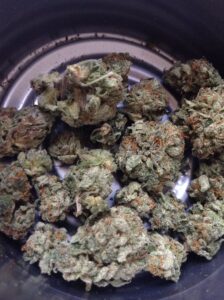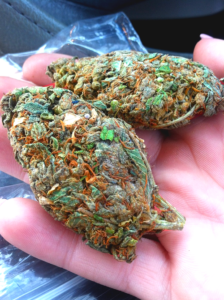Weed in Kreuzberg — the complete guide (laws, culture, where and how, safety, FAQs + meta)
Why Kreuzberg matters for cannabis culture Weed in Kreuzberg
Kreuzberg (particularly SO36 / Oranienstraße / Kottbusser Tor / Landwehrkanal areas) has been a focal point of Berlin’s countercultural life for decades: street art, clubs, leftist politics, and international food markets shape its identity. That same neighborhood energy made Kreuzberg a natural place for early-adopter cannabis enthusiasts, activists, and the community-organized projects that appeared as Germany’s regulatory landscape shifted. The neighborhood’s bars, private lounges, and grassroots social-club spirit meant Kreuzberg has become a testing ground for how legal cannabis can be integrated into urban life. Weed in Kreuzberg
The legal framework you must know (short version)
- National law (Cannabis Act): As of April 1, 2024, Germany legalized limited adult possession, home cultivation, and set a framework for non-profit “cannabis social clubs.” Adults 18+ may possess limited amounts in public and grow a limited number of plants at home. The law also created rules for clubs and distribution limits. (Wikipedia)
- Berlin pilots & local implementation: Berlin has been among the states/districts running pilot programs to evaluate regulated retail models. Friedrichshain-Kreuzberg and Neukölln were selected for pilot retail studies, with participating shops and strict study parameters. These pilots change the local availability picture compared with other cities.
What exactly is legal now (detailed)
The core, load-bearing rules you should memorize before doing anything:
- Age: Adults 18+ are covered by the federal legalisation.
- Possession limits in public: Small personal amounts are exempt from criminal penalties — check current national limits (the federal law set public possession limits — see official FAQ). Always keep identification. (Wikipedia)
- Home possession & cultivation: The law allows limited home possession and limited cultivation (e.g., up to three plants per adult for private use) under the federal act; local rules may adjust or supervise how clubs operate. (Wikipedia)
- Cannabis social clubs: Non-profit member-run clubs were authorized under the law (with membership, cultivation quotas, and reporting obligations) to supply members and reduce illicit street trade. Berlin has a large number of organizations and informal clubs; regulated clubs must follow strict rules.
How people in Kreuzberg typically buy cannabis today
Because national legalization left key questions about retail distribution to implementation phases, the “how” varies:
- Cannabis social clubs / non-profits: Many Kreuzberg residents join local clubs. These clubs require membership, ID checks, and internal rules; they’re intended to supply members with limited amounts and reduce street dealing. They are currently the most legitimate pathway to acquire cannabis in a social setting in many parts of Berlin. (Wikipedia)
- Pilot retail stores (study shops): In districts running Humboldt University–backed or government-backed pilot trials, licensed shops sell regulated products under study conditions (quality-assured products, age checks, daily/monthly purchase caps).
Where to consume in Kreuzberg (practical spots & rules)
- Private apartments & members-only clubs: The safest, legal places to consume are private residences and members-only clubs that explicitly allow consumption on premises. Many Kreuzberg lounges and “social club” spaces have become comfortable, regulated environments for members. Always respect house rules and club membership requirements.
- Public spaces: Public consumption may be permitted in some public places, but local restrictions can ban smoking near schools, playgrounds, or during major events. Be discreet, obey signs, and expect police to intervene if local ordinances forbid consumption at a specific spot.
The Kreuzberg scene — culture, events, and etiquette
- A social, DIY vibe: Kreuzberg’s cannabis culture is shaped by grassroots organizing: members-only clubs, pop-up consumption lounges, activist meet-ups, and a tolerant but politically aware crowd. The neighborhood values community, harm reduction, and safe supply.
- Etiquette: Be mindful of neighbors, especially in residential areas. Kreuzberg is mixed-use — nightlife coexists with families and immigrant communities. Keep smoke out of stairwells and shared spaces, and never consume around minors or near schools.
Safety, health, and harm reduction
- Know your limits: Start low and go slow — set & setting matter. Don’t mix cannabis with alcohol or other depressants. The federal FAQ warns about mixing and novice driver bans.
- Test product quality: Licensed clubs/pilots should offer tested products. Avoid unmarked street batches of unknown strength. Lab-tested products reduce contamination and unexpected potency. (Wikipedia)
- Driving & machines: Never drive under the influence. Germany has strict THC-related driving rules and penalties. If you plan to bike, drive, or operate heavy machinery, wait long enough and be conservative.
Practical travel tips for visitors to Kreuzberg
- If you’re visiting from abroad: Be certain you meet age requirements (18+). Carry ID. Do not attempt to export or import cannabis — it remains illegal to take cannabis across borders. Check your home country’s rules before travel.
Kreuzberg hotspots & resources (examples) Weed in Kreuzberg
These change fast; check current club listings and pilot-store signage before you go.
- Social clubs & private lounges: Kreuzberg hosts several member-based lounges and private clubs — they often list themselves on community directories (e.g., local cannabis maps or Zazapass-style listings). Always verify membership requirements and opening hours.
The business and regulatory outlook (what to expect next) Weed in Kreuzberg
Germany’s 2024 law opened the door, but implementation is iterative. Expect:
- More pilot studies and careful rollouts in more districts or expanded retail licensing after study conclusions. Berlin’s pilot experiments (including Friedrichshain-Kreuzberg) are shaping national rollout decisions.
Sample 3-day Kreuzberg itinerary for cannabis-curious visitors (legal, safe)
Day 1 — Orientation & safety:
- Morning: Street-art walk on Oranienstraße, visit Markthalle Neun. (sightseeing)
- Afternoon: Attend a public club info session or harm-reduction workshop (many clubs/NGOs run drop-in info events).
- Evening: If you’ve joined a legal club, use their member lounge — keep it low-key and respect club rules.
Day 2 — Culture & measured consumption:
- Morning: Relax at Landwehrkanal, vitamin water + snacks.
- Afternoon: Visit a licensed pilot shop if open and you’re eligible; ask staff about potency and testing.
- Evening: Private dinner, carefully dose if you choose to consume at home or in a permitted club.
FAQs (short, practical answers)
Q: Is weed legal in Kreuzberg?
A: Yes — under Germany’s Cannabis Act adults 18+ can possess limited amounts and grow a small number of plants; Berlin has additional pilot projects and clubs that shape local access. Use and purchase methods vary by pilot status and club rules. (Wikipedia)
Q: Where can I buy legal weed in Kreuzberg?
A: Primary legal pathways are joining a licensed cannabis social club or buying from pilot retail stores if you’re in a pilot-study area. Avoid unregulated street vendors.
Final notes & common-sense rules
- Respect the law and local culture. Kreuzberg’s community values are strong: respect neighbors, keep shared spaces clean, and don’t normalize consumption around minors.
- Prefer regulated sources. Clubs and pilot shops provide product testing and safer supply chains. The transition to legal retail is ongoing; be skeptical of too-good-to-be-true street deals.

I have used Global Weedworld (Globalweedworld@galaxyhit.com) at least 4-10 times and every time it has been a top notch.
He is the best local plug you can find around. He is very pleasant, friendly and fast. He is a lifesaver.
He sells top shelf WEED and other stuffs at moderate prices. I will always recommend this guy when people ask me my ” go-to”.
All you have to do is follow his instructions.
Just send him an email and I bet you will come back for more once you finish with what you bought because his quality is amazing.
Also Contact him on his telegram link telegramhttps://t.me/GlobalweedWorld
⚠️ Know that he do not have telegram channels only the telegram link above

The strain was exactly what I was looking for. It had that perfect balance, and the high was smooth. Also, the packaging was discreet and professional. Really impressed
I’ve been buying online for a while, but this shop’s service and product quality set them apart.
Everything was fresh, potent, and the customer service is outstanding
My first purchase and I’m hooked.
Excellent product and the customer support was super helpful in answering all my questions. Highly recommend this site
From browsing to checkout, everything was seamless. Delivery was on time, and the product exceeded my expectations.
I’ll be recommending this to my friends
I’ve been buying from a lot of different places, but this one stands out. The bud is top-notch, and the prices are reasonable.
Will be ordering again soon! Amazing experience! The product was exactly as described,
and the packaging was on point—safe and odor-free. Thank you!
Delivery was crazy fast, and the product… This place is setting the bar for online weed shops. Keep doing what you’re doing. You’ve got a loyal customer for life.
Third order in a row — flawless. Told my friends — now they’re ordering too. This is how weed buying should be. Clean, easy, reliable.
Best decision I made all week. Real ones know. This site is fire. I don’t usually leave reviews, but this deserved one.
I was worried about ordering online, but the packaging was perfect completely. You can tell they care about their customers. Fast replies and reliable support.